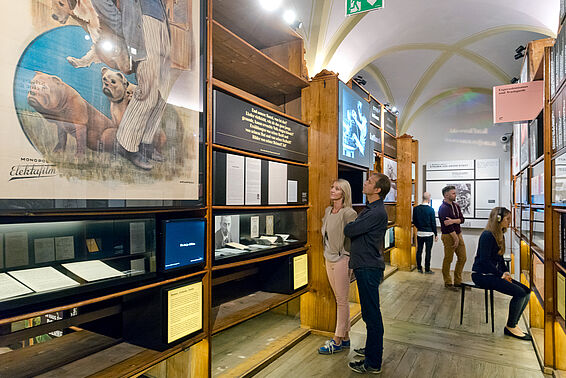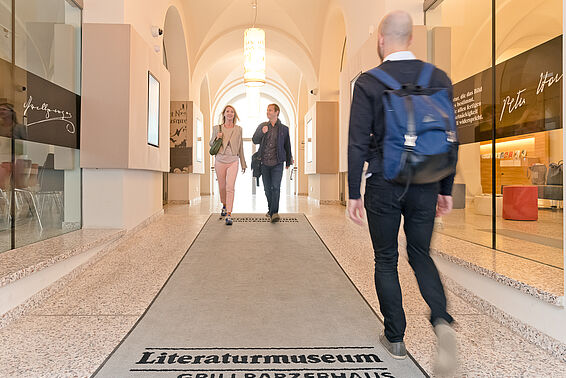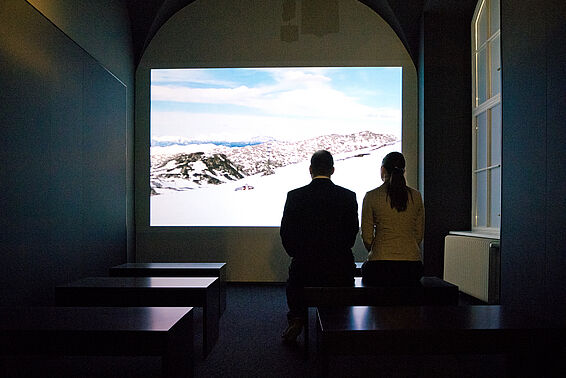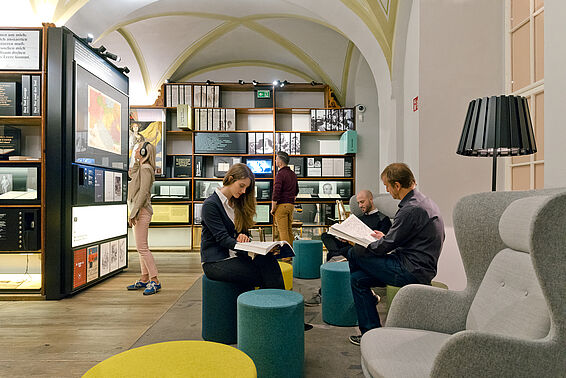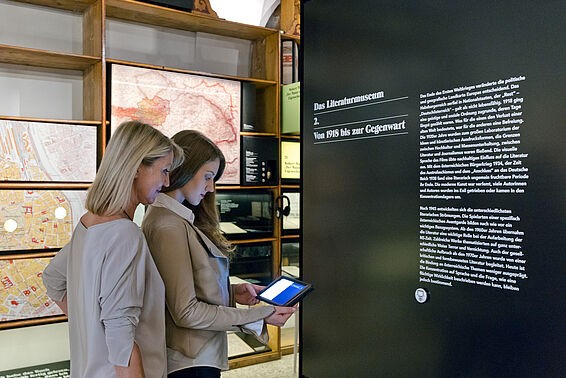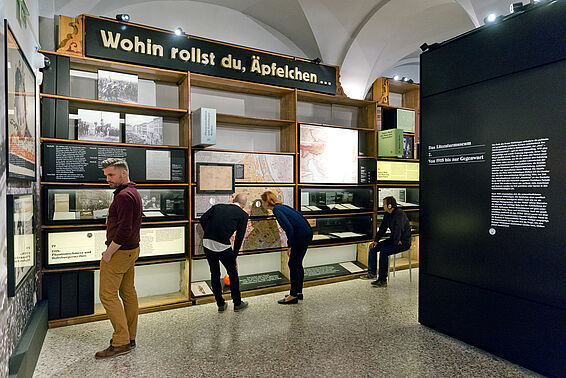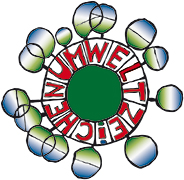A literary voyage of discovery
The permanent exhibition at the Literary Museum presents the range and diversity of Austrian literature from the end of the 18th century until the present day. How does a novel or a poem begin? Where do writers write, and what do they live on? What picture of Austria does literature show us? What actually is literature anyway and what does it have to do with our present day and even with our history?
In the historical and themed sections you can learn what perhaps makes Austrian literature specifically Austrian: its close links with music, the fine arts and theatrical forms, or the use of satire and polemic and a critical approach to national cliches and stereotypes.
Austrian literature is characterised by the multilingual, multiethnic traditions of the Habsburg multinational empire. The places covered by Austrian literature are correspondingly varied: they extend from the fringes of the Habsburg empire and Old Austrian Galicia to Budapest and Prague and into Slovenian-speaking Carinthia. Even beyond that, the literature of Austria is closely interwoven with that of other countries and languages.
We use different media to show you the places, themes and history of Austrian literature: manuscripts, letters, photographs, posters and maps, historic film and audio material, and also curiosities like Elfriede Gerstl's hats, Peter Handke's walking stick, a magician's wand from Indonesia and a broken alarm clock. They all have a story to tell about literature and are part of how literary works came to be written and what their impact has been. Discover manuscripts written by Johann Nestroy, text and letters by Ingeborg Bachmann, the “Zetteluniversum” by the poet Friederike Mayröcker and Franz Grillparzer's study, preserved in its original condition.
Let our outstanding texts and artefacts guide you through the history of Austrian literature. However, the exhibition also invites you to make your own discoveries, to think laterally and explore. It's all about a love of literature that finds its own way. That way will take you from looking to reading and back again.

